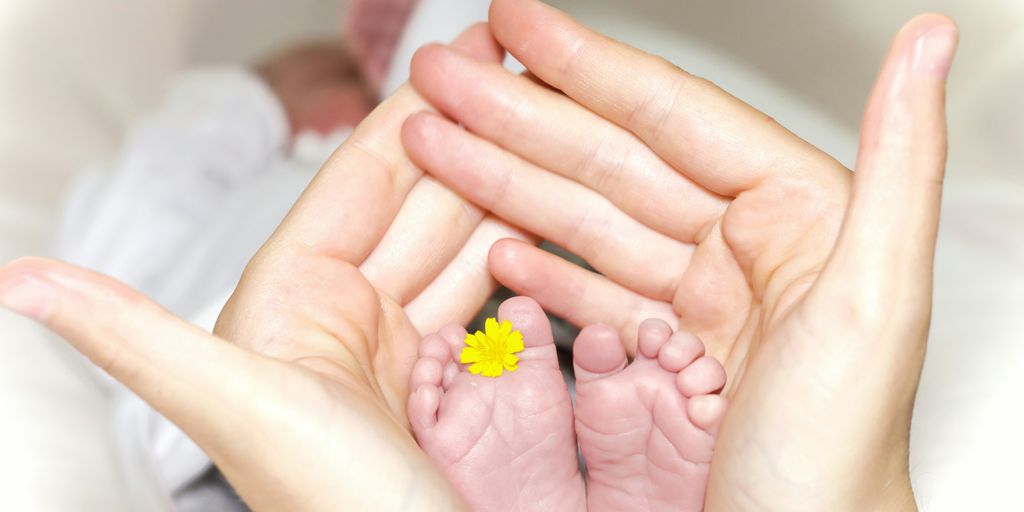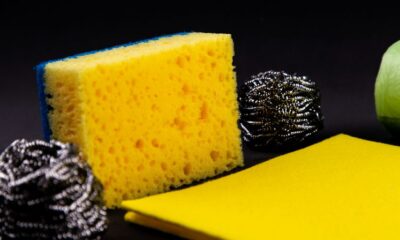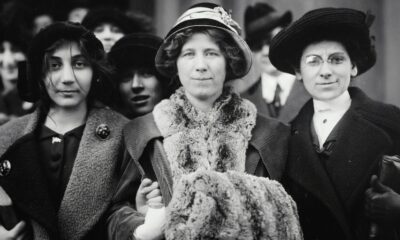Education
Understanding Infants at 7 Weeks: Key Milestones and Developmental Insights

At seven weeks old, infants are starting to show significant changes in their development. This period is marked by a variety of milestones that reflect their growing physical abilities, cognitive skills, and social interactions. Understanding these developments can help parents and caregivers support their little ones as they explore the world around them. Here’s a closer look at what to expect from infants at 7 weeks, including key milestones in various areas of growth.
Key Takeaways
- Infants at 7 weeks are becoming more alert and responsive, showing signs of physical growth.
- They are starting to recognize familiar faces and respond to social cues, building emotional connections.
- Motor skills are developing, with babies beginning to strengthen their neck muscles and show reflexive movements.
- Sensory development is crucial, as babies begin to track movements visually and respond to sounds.
- Playtime is essential for growth, offering opportunities for exploration and stimulation.
Key Developmental Changes in Infants at 7 Weeks
Physical Growth Patterns
At 7 weeks, your baby is likely packing on the pounds and getting longer. Don’t be shocked if you’re already moving up a size in clothes! Growth spurts are common around this time, so you might notice an increase in appetite. It’s all part of their natural development. Just keep feeding them on demand, and they’ll get what they need. It’s amazing how quickly they change.
Cognitive Development Insights
Your little one’s brain is working overtime. They’re starting to pay more attention to faces and objects, and their visual development is improving. They can now track moving objects a bit better, and they’re becoming more aware of their surroundings. It’s like they’re constantly taking in new information and trying to make sense of the world. You might notice them staring intently at things, which is a sign that their cognitive skills are developing.
Emotional and Social Milestones
Get ready for more smiles! Around 7 weeks, babies often start showing more genuine social smiles. These aren’t just reflexive twitches; they’re real expressions of happiness and recognition. They’re also starting to recognize your voice and face, which strengthens the bond between you. It’s a really rewarding time as you see their personality begin to shine through. They’re also starting to show preferences for certain people and activities, which is pretty cool to see.
Understanding Sensory Development
At 7 weeks, your baby’s senses are really starting to come online! It’s a time of rapid learning and discovery as they take in the world around them. They’re not just passively observing; they’re actively processing information through sight, sound, and touch. It’s amazing how much they can learn in such a short time.
Visual Tracking Abilities
Your baby’s vision is improving every day. They can now track moving objects with their eyes more smoothly than before. This is a big step up from the jerky movements they might have had earlier. Try moving a colorful toy slowly in front of their face and watch as they follow it. This helps strengthen their eye muscles and improves their focus. By week 18, a baby’s vision and depth perception improve significantly, allowing them to play more independently. depth perception
Auditory Recognition
Your baby is becoming more attuned to sounds. They can recognize your voice and may even turn their head towards familiar sounds. Talk to them often, sing songs, and read aloud. This helps them develop their auditory processing skills and lays the foundation for language development. It’s also comforting for them to hear your voice, especially when they’re feeling fussy.
Tactile Exploration
Babies explore the world through touch. They love to grab things, feel different textures, and put things in their mouths (under close supervision, of course!). Provide them with a variety of safe objects to touch and feel, like soft blankets, textured toys, and even your own skin. This helps them develop their sense of touch and learn about different materials. By week 23, the development of fine motor skills accelerates, and babies start using the pincer grasp to pick up objects, a crucial skill for self-feeding and further tactile exploration.
Here are some ideas for tactile stimulation:
- Soft plush toys
- Crinkle paper
- Textured balls
- Baby-safe mirrors
Motor Skills Progression
Reflexes and Movements
At 7 weeks, your baby is still largely governed by reflexes, but you’ll start seeing some intentional movements emerge. The startle reflex (Moro reflex) is still present, but may be lessening. They’ll also still have a strong grasp reflex. These reflexes are crucial for early survival and interaction with the world.
- Rooting reflex (turning head towards touch on the cheek)
- Sucking reflex (sucking on anything that enters their mouth)
- Grasp reflex (tightly gripping anything placed in their palm)
Strengthening Neck Muscles
Tummy time is super important at this stage! It helps your baby strengthen their neck and upper body muscles. They might be able to lift their head briefly now, or at least try to. Don’t worry if they don’t like it at first; just do it for short periods and gradually increase the time. It’s all about building physical strength little by little.
Hand-Eye Coordination
Your baby’s hand-eye coordination is still developing, but they’re becoming more aware of their hands. They might start batting at objects, though it’s usually more accidental than intentional. Toys that dangle and rattle are great for improving hand-eye coordination as your baby reaches out and grasps them. It’s fascinating to watch them discover their own body and how it moves!
Social Interaction and Bonding
Recognizing Caregivers
At seven weeks, your baby is starting to figure out who’s who. While their vision is still developing, they’re beginning to recognize the faces of their primary caregivers. They might stare intently at you, especially during feeding or when you’re talking to them. It’s not just about sight, though; they’re also learning to associate your smell and the sound of your voice with comfort and care. This early recognition is a huge step in forming secure attachments.
Responding to Voices
Have you noticed your baby turning their head towards you when you speak? That’s because they’re starting to connect voices with specific people. They might not understand the words you’re saying, but they definitely recognize the tone and rhythm of your voice. Try talking, singing, or reading to your baby regularly. It’s a great way to cultivate emotional intelligence and strengthen your bond. It’s pretty cool to see them react, even if it’s just a little head turn or a widening of their eyes.
Early Social Smiles
Get ready for some serious heart-melting moments! Around this time, many babies start to show their first real social smiles. These aren’t just random twitches or gas; they’re genuine expressions of happiness and connection. It’s usually triggered by seeing a familiar face or hearing a soothing voice. These smiles are a big deal because they show that your baby is starting to engage socially and emotionally. It’s like they’re saying, "Hey, I know you, and I like you!" Keep interacting with your baby, and those smiles will keep coming. It’s the best reward ever!
Communication Milestones

Cooing and Vocalization
At 7 weeks, your baby’s communication skills are starting to blossom! Forget full sentences; we’re talking coos and gurgles. It’s like they’re testing out their voice, experimenting with different sounds. These early vocalizations are the building blocks for future language development. It’s not just random noise; they’re actually trying to communicate with you. I remember when my little one started cooing – it was the cutest thing ever, and I felt like we were having a real conversation, even if I was the only one who understood what I was saying!
Expressing Needs
While they can’t exactly tell you they’re hungry or tired, babies at this age are getting better at expressing their needs. Crying is still their main method, but you might notice different cries for different things. A hungry cry might be short and repetitive, while a tired cry could be more whiny and drawn-out. Paying attention to these subtle differences can help you figure out what your baby wants. It’s like becoming a baby whisperer! Plus, they’re starting to use body language more effectively – arching their back when they’re uncomfortable, or rooting around when they’re hungry. It’s all about learning to read those early social cues.
Understanding Tone and Emotion
Even though they don’t understand the words you’re saying, babies at 7 weeks are surprisingly good at picking up on your tone and emotions. If you’re talking to them in a soothing, gentle voice, they’ll likely feel calm and secure. But if you’re stressed or agitated, they can sense that too. That’s why it’s so important to be mindful of your own emotional state when you’re interacting with your baby. They’re like little sponges, absorbing everything around them. So, put on a happy face (even if you’re exhausted!) and let them soak up all that positive energy. It really does make a difference!
Playtime and Stimulation
Importance of Play for Development
Playtime isn’t just fun; it’s a crucial part of your baby’s development at 7 weeks. It’s how they learn about the world, develop motor skills, and start to understand cause and effect. Think of it as their first science class, art class, and gym session all rolled into one. It’s also a great way to stimulate those senses.
Recommended Toys and Activities
At this age, simple is best. Forget the fancy gadgets; your baby is more interested in exploring basic textures and sounds. Here are a few ideas:
- Rattles: The classic choice! Babies love the sound and the opportunity to grasp and shake. Make sure they are age-appropriate and easy to hold.
- Soft Toys: Stuffed animals or soft blocks are great for tactile exploration. Choose ones with different textures to keep things interesting.
- Mobiles: A colorful mobile above the crib can capture their attention and encourage visual tracking. Just make sure it’s out of reach!
- Tummy Time Activities: Get down on the floor with your baby during tummy time. Use a tummy-time pillow to make it more comfortable.
Creating a Stimulating Environment
Creating a stimulating environment doesn’t mean turning your home into a sensory overload zone. It’s about providing opportunities for exploration and engagement. Here are some tips:
- Vary the Scenery: Move your baby to different rooms throughout the day. A change of scenery can be surprisingly stimulating.
- Talk and Sing: Narrate your day, sing nursery rhymes, or just chat with your baby. They love the sound of your voice, and it helps with language development. Try slowly shifting a ball as baby plays.
- Safe Exploration: Let your baby explore safe objects with their hands and mouth (under supervision, of course!). This helps them learn about textures and shapes.
Health and Well-Being Considerations
It’s super important to keep tabs on your little one’s health and make sure they’re developing like they should. This involves a few key things, from regular doctor visits to understanding what’s normal and what might need a closer look.
Regular Check-Ups
Don’t skip those doctor appointments! They’re not just about shots; they’re a chance for your pediatrician to track your baby’s growth, development, and overall health. They’ll check things like weight, length, and head circumference to make sure everything is on track. Plus, you can ask any questions you have about children’s health or concerns. It’s also a good idea to keep a record of any milestones your baby hits, like when they start cooing or rolling over, to discuss with the doctor.
Vaccination Schedule
Vaccines are a big deal for protecting your baby from serious diseases. The recommended schedule is designed to give them the best protection at the right time. It might seem like a lot of shots, but they’re really important. If you’re worried about side effects, talk to your doctor. They can explain the benefits and risks and help you feel more comfortable. Here’s a simplified example of a typical schedule:
| Age | Vaccine(s) |
|---|---|
| 2 Months | DTaP, IPV, Hib, PCV13, RV |
| 4 Months | DTaP, IPV, Hib, PCV13, RV |
| 6 Months | DTaP, IPV, Hib, PCV13, RV, Flu (yearly) |
Signs of Healthy Development
Knowing what to look for can help you spot any potential problems early on. Every baby is different, but there are some general signs of healthy development to keep in mind. These include:
- Consistent weight gain and growth.
- Reaching developmental milestones (like rolling over, sitting up, and babbling) within a reasonable timeframe.
- Good muscle tone and movement.
- Responsiveness to sounds and sights.
If you notice anything that concerns you, like a sudden loss of skills, a lack of responsiveness, or persistent fussiness, don’t hesitate to reach out to your pediatrician. It’s always better to be safe than sorry when it comes to your baby’s well-being. Also, remember to prioritize baby care.
Wrapping Up: The Journey of Your 7-Week-Old
So, there you have it! At 7 weeks, your little one is really starting to come into their own. They’re awake more, showing interest in the world around them, and even starting to respond to your voice. It’s a wild ride, and every day brings something new. Just remember, every baby is different, and they’ll hit these milestones in their own time. Keep enjoying those sweet moments, play with them, and don’t hesitate to reach out to your pediatrician if you have any concerns. This first year is all about growth and discovery, so soak it all in!
Frequently Asked Questions
What should I expect from my 7-week-old baby?
At 7 weeks, your baby is becoming more aware of their surroundings and may respond to sounds and faces. They might start to coo and show early signs of social interaction.
How can I help my baby develop their motor skills?
You can help your baby by providing tummy time, which strengthens their neck and back muscles. Also, encourage reaching for toys to improve their hand-eye coordination.
What kind of play is beneficial for a 7-week-old?
Playtime is very important! Use colorful toys that make sounds to stimulate your baby’s senses. Simple games like peek-a-boo can also be fun and engaging.
How can I tell if my baby is developing normally?
Keep an eye on their milestones, such as responding to your voice, making eye contact, and showing interest in their surroundings. Regular check-ups with your doctor can also help ensure they are on track.
What are some signs of healthy development in my baby?
Signs of healthy development include good feeding habits, being alert and awake during playtime, and showing interest in people and objects around them.
When should I schedule my baby’s vaccinations?
Vaccination schedules can vary, so it’s best to consult your pediatrician. Generally, many vaccinations are given during the first few months of life.
-

 Home and Garden2 days ago
Home and Garden2 days agoTransform Your Space: A Guide to Minimalist House Interior Design in 2025
-

 Home & Family3 days ago
Home & Family3 days ago10 Essential Cleaning Hacks for Bathroom Surfaces You Need to Try
-

 Innovations5 days ago
Innovations5 days agoWill AI Take Your Job? The Truth About Automation and Employment
-

 Press Release6 days ago
Press Release6 days agoWhat Makes Alaxio Different from Every Other Altcoin?
-

 Crime3 days ago
Crime3 days agoExploring the Most Anticipated New True Crime Documentaries of 2025
-

 Health & Fitness2 days ago
Health & Fitness2 days agoDiscover the Best Multivitamin for Women Over 40: A Comprehensive Guide to Optimal Health
-

 Health & Fitness3 days ago
Health & Fitness3 days agoDiscovering the Best Multivitamin for Women Over 40: Essential Nutrients for Optimal Health
-

 Business3 days ago
Business3 days agoMaximize Your Earnings with American Express High Yield Savings Accounts in 2025


















